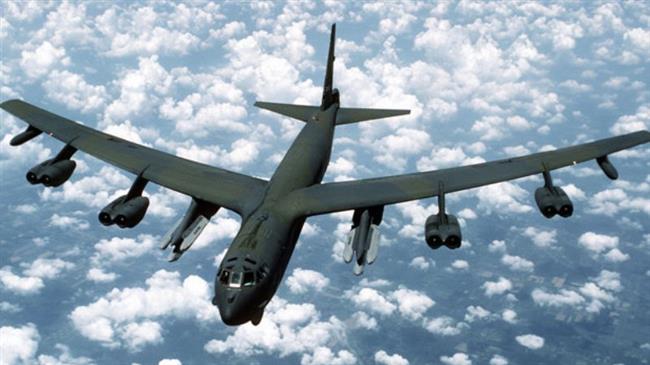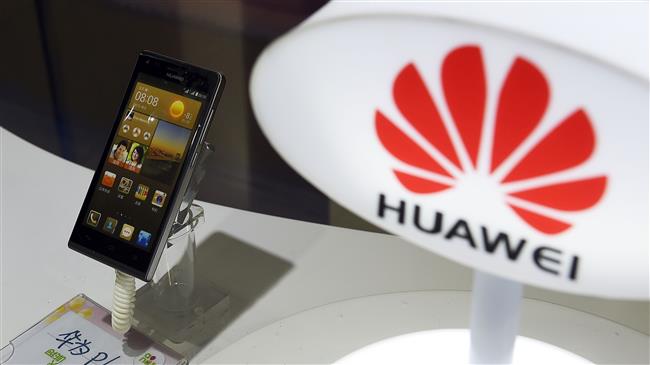US sends B-52 bombers for 'training' after China drills near Taiwan
The US says its strategic B-52 bombers have carried out training in the vicinity of the South China Sea and the southern Japanese island of Okinawa, in what a Chinese newspaper linked to China's drills near Taiwan.
Two B-52 Stratofortress bombers flew within 250 kilometers of Guangdong’s coastline in southern China on Tuesday afternoon.
The US Air Force said on Friday they took off from Andersen Air Force Base on the US Pacific island of Guam and “transited to the vicinity of the South China Sea.”
“The B-52Hs conducted training and then transited to the vicinity of Okinawa to conduct training with USAF F-15C Strike Eagles, before returning to Guam," it said.
“Continuous Bomber Presence (CBP) missions are intended to maintain the readiness of US forces," the Air Force added.
An Air Force spokeswoman described the exercises as “a routine mission.”
Chinese Defense Ministry spokesman Wu Qian said on Thursday that the armed forces had the situation under control.
China's state-run Global Times linked the move to a series of Chinese military drills near Taiwan, saying if the US bombers were meant to send a message to Beijing about Taiwan, it would not work.
“The US cannot prevent the mainland exerting military pressure on Taiwan,” the paper said. “Mainland military aircraft will fly closer and closer to Taiwan and in the end fly above the island.”
China’s Taiwan Affairs Office spokesman Ma Xiaoguang said weeks of naval maneuvers in the narrow waterway separating the Chinese mainland from Taiwan was a message that Beijing was ready to take more actions to protect peace and stability in the Taiwan Strait and the interests of people on both sides of the strait.

China has held several military exercises around Taiwan, including flying bombers and other military aircraft, since Taiwan’s pro-independence President Tsai Ing-wen took office in 2016. The latest drill was conducted last week in the Taiwan Strait.
Taiwanese officials said they would practice thwarting a Chinese “invasion” in annual live-fire drills in June.
Beijing sees the island as a breakaway Chinese province that has to be brought back into the fold and has not ruled out reunification by force. It opposes other countries pursuing ties with the self-ruled island and has consistently warned Washington against engaging with Taipei.
Washington switched diplomatic recognition from Taiwan to China in 1979, acknowledging the “One China” policy of Beijing’s sovereignty over Taiwan. The US, however, maintains military and trade ties with the self-ruled island.
Upon taking office, President Donald Trump began questioning Washington's commitment to the policy and angered Beijing by taking a congratulatory phone call from the Taiwanese president after winning the 2016 presidential election.
Trump took even further steps in violating the principle last month, when he signed the Taiwan Travel Act, which encourages visits between US and Taiwanese officials “at all levels.”
Chinese Foreign Ministry spokesman Lu Kang said the clauses of the approved bill were legally non-binding, but “severely violate the One China principle” and sent “very wrong signals to the pro-independence separatist forces in Taiwan.”
France and allies weigh response to possible US invasion of Greenland
Israel approves over 3,400 settler units in occupied East al-Quds
VIDEO | South Africans demand release of UK Palestine Action activists
Israel kills one, injures another in new airstrike on southern Lebanon
VIDEO | South Koreans demand end to US imperialism
‘Outright piracy’: Moscow slams US seizure of Russian-flagged oil tanker in North Atlantic
China expected to raise Iran oil imports amid Venezuela tensions: Report
Advocacy groups launch media campaign to ‘save’ Palestinian prisoners













 This makes it easy to access the Press TV website
This makes it easy to access the Press TV website